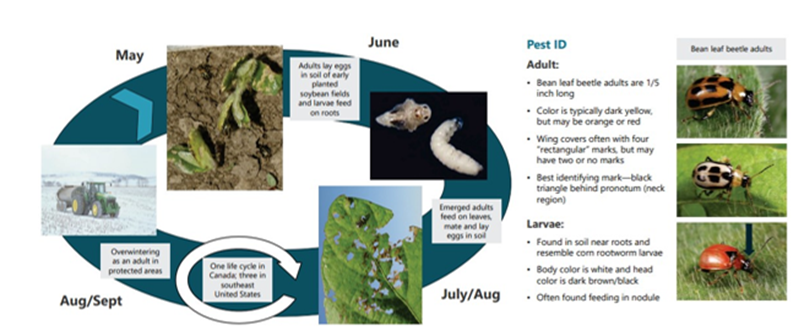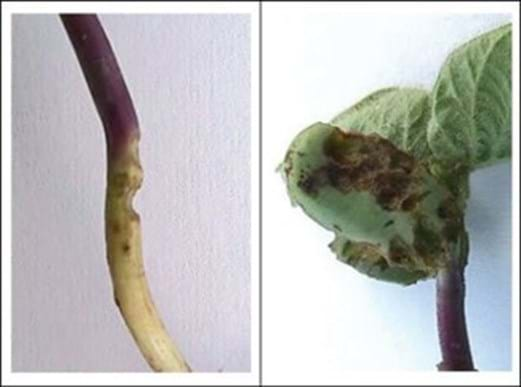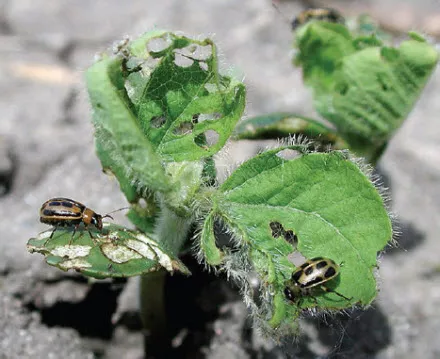Bean Leaf Beetles
BY Dairyland Seed Agronomy Team
Bean Leaf Beetles (BLB) are a very common pest with erratic behavior in soybeans. BLB hibernate (i.e., overwinter) as adults beneath plant debris in woods, grassy areas, and cropland. Additionally, fields having recently hosted soybean, dry beans, clovers, alfalfa, and many other leguminous plants and weeds provide a great source of attraction and an early buffet for these critters to lay eggs within.
Across Dairyland Seed’s footprint there are typically two generations in Indiana, Illinois, and Iowa and one generation in areas to the north. Mild winters, (i.e. 2022), which contribute to higher-than-average survival, bean leaf beetle populations can reduce plant populations by larval and adult feeding on newly emerging soybean seed, roots, stems, and leaves. Scouting of bean leaf beetles on emerging through early vegetative stages is best accomplished by personal observation as beetles are easy to see and count at this stage. The period, from emergence through establishment of the first trifoliolate leaf, is one of the most critical for soybean damage. If the cotyledons (seed leaves) are destroyed before the unifoliolate leaves fully emerge, or if the growing point is severely damaged, stands and yields may be reduced.

There are no native nor transgenic resistance options for BLB at this point, so protection from early season pressure is best accomplished using Dairyland Seed seed-applied fungicide and insecticidal options. Treatment thresholds rarely warrant action from an over-the-top application of insecticides at early growth stages, however, a variety of insecticides are registered for bean leaf beetle in soybeans. Effective insecticides should have good initial knockdown as well as residual control. Consult your local Crop Protection Specialist or University Extension Entomologist for details.
Adult BLB can vector the Bean Pod Mottle Virus and fields where activity is prevalent should warrant your close observation later in the season for this pathogen. More to come on this subject later in the year. https://cropprotectionnetwork.org/encyclopedia/bean-pod-mottle-of-soybean

Bean leaf beetle feeding injury to soybean hypocotyl (left) and cotyledons (right).

Bean leaf beetles and feeding injury to young soybeans.

Brian Weller
Western Region
507.456.3034

Rod Moran
Western Region
507.456.3034

Dan Ritter
Central Region
219.863.0583

Branden Furseth
Northern Region
608.513.4265

Mark Gibson
Eastern Region
260.330.8968

Amanda Goffnett
Eastern Region
989.400.3793

Ryan Mueller
Eastern Region
989.400.3793
